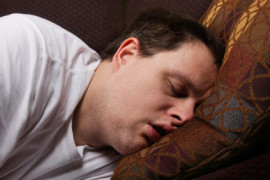Approximately 18 million Americans suffer from obstructive sleep apnea, and while men are significantly more likely than women to be diagnosed with the condition, the gender bias lies less in numbers and more in the physiological effects on each gender.
A recent case-control study published in Brain, Behavior, and Immunity found that men and women with obstructive sleep apnea present significantly different levels of inflammatory biomarkers.
Researchers evaluated the clinical history, polysomnograph results, and fasting blood samples of 120 middle-aged patients with mild to moderate sleep apnea. Among 62 men and 58 women, they found:
- Overall, women exhibit higher levels of both inflammatory and metabolic markers than men.
- Men with sleep apnea are more likely to have increased inflammatory markers CRP, TNFR1, and IL-6 than women with sleep apnea.
- Increased CRP is associated with sleep apnea in both men and women
- CRP is independently associated with apnea-associated hypertension in both genders.
The study authors concluded that, while inflammatory markers are important in the diagnosis and treatment of sleep apnea, they should be interpreted differently in men and women.
According to the National Institute of Health, sleep apnea is characterized by pauses in breathing or shallow breaths that can last from a few seconds to minutes during sleep. This disturbs the quality of sleep in the short term, but in the long term, it can seriously impact risk for cardiovascular disease, stroke, diabetes, obesity, erectile dysfunction, memory problems, and even death from car accidents.
Because sleep apnea screening takes place in both medical and dental offices, this new information about the gendered effect of sleep apnea on inflammatory biomarkers is important for any medical or dental professional who addresses sleep disorders.
Source: Gender differences in the association of sleep apnea and inflammation



